Introduction to Cold Emailing

What is Cold Emailing
Cold emailing is a method of reaching out to potential customers, clients, or partners who have not had a prior relationship or contact with you or your business.
It involves sending an unsolicited email with the goal of introducing your product or service, building a relationship, and ultimately converting the recipient into a customer. Unlike spam emails, cold emails are targeted and personalized, aiming to provide value to the recipient.
Cold emailing campaigns typically have a conversion rate ranging from 1% to 5%, depending on the quality of the list and message.
Can Cold Emailing Generate New Business
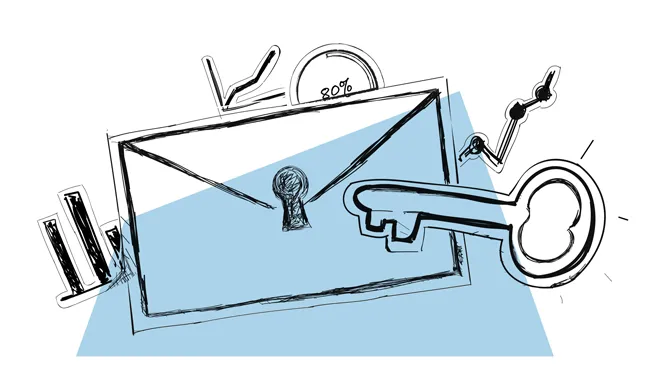
Yes, cold emailing can effectively generate new business by providing direct access to potential customers who may not know a company's products or services. Its effectiveness lies in its ability to personalize messages and target them specifically to individuals most likely to be interested in what a business offers.
Cold email marketing is a cost-effective way to reach potential customers directly, with measurable ROI and scalability. Additionally, the success of cold emailing campaigns can be easily measured through open rates, click-through rates, and conversion rates, offering valuable insights for optimizing future campaigns.
According to Alore.io, the average open rate for cold emails across industries is around 21.33%, indicating a decent level of engagement. With proper execution, cold emailing can yield a high return on investment, making it a compelling choice for businesses looking to expand their reach and generate new leads.
Best Time to Send Cold Emails

Identifying the best time to send cold emails is crucial for maximizing open rates. Data and research suggest that the optimal timing can vary depending on your audience's routine, but a few general patterns have emerged:
Mid-Week Advantage
Emails sent on Tuesday, Wednesday, and Thursday tend to have higher open rates compared to those sent on Mondays and Fridays.
Mid-week days are often when people have settled into their workweek but are not yet winding down for the weekend, making them more likely to engage with new emails.
Optimal Time Frames
Sending emails early in the morning (around 6-7 AM) or later in the afternoon (between 1-3 PM) can be effective. The early morning sends catch people as they begin their day and check their inbox, while the afternoon times align with the post-lunch slump when recipients might be looking for a distraction or catching up on their emails.
Consider Time Zones
When targeting recipients in different geographic locations, it's important to adjust your sending times to match their time zones.
This ensures that your email arrives at an opportune moment regardless of where they are located.

Audience Specifics
Ultimately, the best time to send cold emails can depend on the specific habits and preferences of your target audience. B2B emails might perform better during business hours, while B2C emails could have more flexibility.
Testing different times and analyzing the performance data of your campaigns is key to understanding what works best for your audience.
How Cold Emailing Can Bring New Business Opportunities
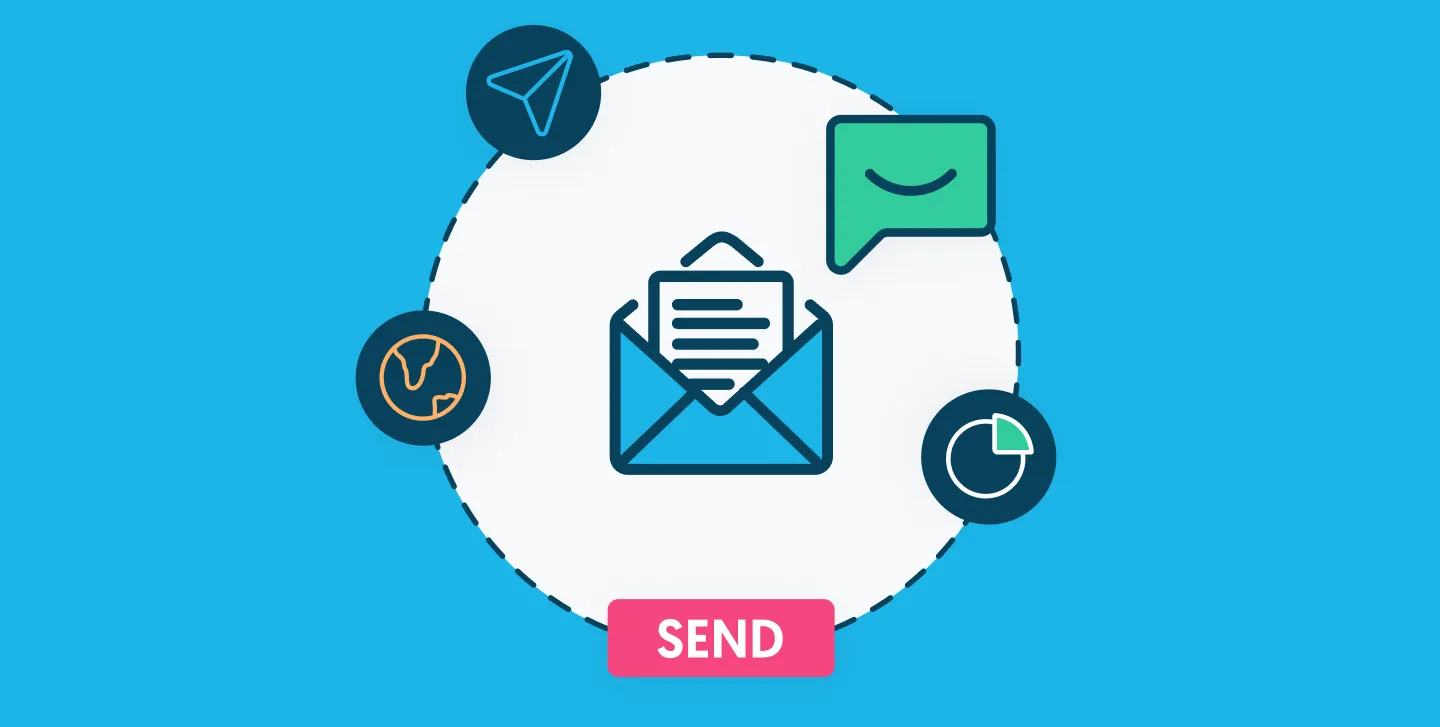
Cold emailing, when strategically employed, can be a powerful way to uncover new business opportunities. By targeting potential customers, businesses can directly communicate their value proposition, fostering interest and engagement where none previously existed.
Here's an in-depth look at how cold emailing can be leveraged to open doors to new possibilities:
1. Targeted Outreach
Direct Connection
Cold emailing facilitates a direct line of communication with potential clients or partners. It allows businesses to reach out to decision-makers or key contacts within an organization without intermediaries.
Businesses offering SEO services can use cold emailing to target clients looking to enhance their website rankings.
Segmentation and Personalization
By segmenting your email list based on demographics, interests, or behaviors, and personalizing the emails to address the recipients' specific needs or pain points, businesses can significantly increase the relevance and effectiveness of their outreach.
Research shows that emails with personalized cold email subject lines are 26% more likely to be opened. When you address the specific needs and pain points of your recipients, you demonstrate an understanding of their challenges, making them more receptive to your message.
2. Building Relationships
First Point of Contact
Cold emails can serve as the initial touchpoint in building long-term relationships with potential customers. By offering value from the first interaction, businesses can lay the groundwork for trust and loyalty.
Sharing case studies or testimonials within your email can increase your credibility. For instance, mentioning that "Our solution has helped companies like yours increase sales by up to 30% within three months" can be very persuasive.
Networking Opportunities
Beyond direct sales, cold emailing can open doors to partnerships, collaborations, and other networking opportunities that might not have been discovered through other channels
3. Generating Leads and Sales
Lead Generation
Cold emailing is an efficient way to generate leads by reaching out to potential customers who might be interested in your products or services but are not yet aware of your brand.
By targeting individuals who match your customer profile, cold emailing can lead to higher conversion rates compared to broad-spectrum advertising. Tailored messages resonate more, making the recipient feel understood and valued.
Sales Conversion
With a well-crafted message that includes a clear call to action, cold emails can directly contribute to sales by encouraging recipients to take the next step, whether it's scheduling a demo, signing up for a trial, or making a purchase.
4. Cost-Effectiveness
Low Expense
Compared to traditional advertising or paid digital marketing campaigns, cold emailing requires minimal investment. The primary costs involve list building and possibly investing in a good CRM or email automation tool.
The targeted nature of cold emails, combined with the ability to personalize and automate, results in a higher ROI. Businesses can reach a vast number of potential customers without the significant costs associated with traditional advertising methods.
Measurable and Scalable
Trackable Metrics
Open rates, click-through rates, and conversion rates provide immediate feedback on the performance of your cold emailing campaigns. This data helps in refining your approach and improving the effectiveness of future emails.
Scalability
As your strategy proves successful, you can gradually scale up your cold emailing efforts to reach a broader audience without proportionately increasing your marketing budget.
Cold Email Structure and Key Components

A well-structured cold email is important for making a strong first impression and engaging the recipient. To write cold emails effectively, focus on addressing the recipient’s pain points with concise and compelling messaging.
An effective cold email comprises several key components, each designed to capture interest, build credibility, and encourage a response. Below, we delve into the structure and essential elements of a successful cold email:
Subject Line
First Impression: The subject line is the first thing a recipient sees and decides whether an email is worth opening. It should be compelling, concise, and relevant, sparking curiosity or highlighting an immediate benefit.
Personalization and Relevance: Including the recipient's name, company name, or referencing a recent event can significantly increase open rates. Tailored subject lines resonate more with recipients, making them feel the email is specifically meant for them.
Example: "Boost Your ROI in 30 Days with XYZ Marketing Magic, John!"
Greeting
Personal Touch: Begin with a personalized greeting using the recipient’s name to establish a connection. Avoid generic salutations like "Dear sir/madam" to prevent your email from feeling impersonal or spammy.
Introduction
Establishing Context: Quickly introduce yourself and your reason for reaching out. This section should be concise, stating who you are, your company, and why you are contacting them specifically. It's crucial to make a connection or reference something relevant to the recipient to grab their attention.
Example: "My name is Jane Doe, and I'm with XYZ Marketing Solutions. I recently came across your company's impressive digital campaign for Product A and thought there could be a fantastic opportunity for us to collaborate."
Value Proposition
Demonstrating Value: Clearly articulate what you offer and how it can benefit the recipient. Highlight your unique selling points (USPs) and explain how they solve a problem or improve the recipient’s current situation.
Evidence and Credibility: Support your claims with data, case studies, testimonials, or success stories. Providing evidence of your success increases your credibility and the persuasiveness of your message.
Example: "Our platform, XYZ Marketing Magic, has helped businesses like yours increase their marketing ROI by up to 50% within the first month of implementation. We achieve this through our AI-driven ad optimization, which automatically fine-tunes your campaigns in real-time for maximum performance."
Call to Action (CTA)
Clear Next Step: Your email should conclude with a clear and specific call to action. Whether it’s scheduling a call, requesting a reply, or guiding them to visit a website, the CTA should be straightforward and easy to follow.
Low Commitment: Aim for a CTA that requires minimal effort from the recipient, such as a brief call or a meeting request. High-commitment CTAs can be off-putting and reduce response rates.
Example: "Could we schedule a 15-minute call next week to discuss how XYZ Marketing Magic can specifically help your campaigns? Please let me know a time that works for you, or feel free to book a slot directly in my calendar [insert calendar link]."
Closing
Professional Sign-Off: End your email with a professional closing, such as "Best regards" or "Sincerely," followed by your name, position, and company information.
Contact Information: Include your contact details, such as your phone number and LinkedIn profile, to offer additional ways for the recipient to connect with you.
Example: "Looking forward to the opportunity to work together and boost your campaign results. Best regards,"
Email Signature
Branding and Legitimacy: A well-designed email signature can add a professional touch and reinforce your brand. It should include your full name, position, company name, and contact information, along with any relevant social media links or website URLs.
Example:
Jane Doe
Sales Manager at XYZ Marketing Solutions
Phone: 555-123-4567
Email: jane.doe@xyzmarketingsolutions.com
LinkedIn: [LinkedIn Profile]
Website: [Company Website]
Cold email senders can build trust and credibility by using professional signatures and transparent messaging.
Example of a Cold Email with Key Components
How to Write a Cold Email that Brings You Business

Crafting a cold email that effectively brings you business is not just about what you say, but how you say it and to whom it's said.
Let's dive deep into the initial steps required to set the foundation when crafting your first cold email campaign
1. Research Your Recipient
Understanding who you're emailing is important for an effective cold email. This isn't just about knowing their name but about understanding their role, their challenges, and how your service or product fits into their world.
Targeting the right person within an organization is key to maximizing the impact of cold email outreach.
a. Identify Pain Points
Look into the recipient's industry, recent company news, and their role within the company to identify challenges they might be facing. LinkedIn and company websites are valuable resources for this.
b. Tailor Your Message
Use this information to tailor your email, making it relevant and compelling. For instance, if a company has recently expanded, they might be facing scaling challenges that your product can address.
c. Concrete Data
According to a study by Experian, personalized promotional mailings have 29% higher unique open rates and 41% higher unique click rates. This underscores the importance of recipient research in enhancing email engagement.
Building a high-quality prospect list lays the foundation for a successful cold email campaign. Organizing your prospect list in a Google Sheet simplifies collaboration and tracking during the campaign.
How to Conduct Thorough Recipient Research Effectively
- Company Website and Blog: Review the recipient's company website, especially sections like "About Us," "News," or "Blog." These can provide insights into the company’s goals, recent achievements, or ongoing challenges.
- Industry Publications: Read industry-specific publications or websites to understand broader trends that might be affecting the recipient's business. This can help you align your offering with current market needs.
- LinkedIn and Social Media: Use LinkedIn to identify the key decision-makers within the organization. Look for titles that match your ideal customer profile, such as managers, directors, or executives in the relevant department.
- Professional Forums and Networks: Sometimes, professionals share their challenges and successes on industry forums or networks. This can give you additional context about their priorities and concerns.
Cold email recipients are more likely to respond positively when emails are tailored to their specific interests and challenges.
2. Craft a Captivating Subject Line
Your subject line decides whether your email gets opened or ignored. It needs to be compelling, concise, and personalized.
Subject lines with fewer than 50 characters have higher open rates. This brevity ensures that the entire subject line is visible on mobile devices, where a significant portion of emails are read.
Test Your Subject Lines, A/B testing different subject lines can give you insights into what resonates with your audience. Campaign Monitor notes that emails with personalized subject lines are 26% more likely to be opened.
How to Create a Subject Line that Captures Attention:
- Be Clear and Direct: Your subject line should give the recipient a clear idea of what the email is about. Avoid being overly cryptic; the goal is to ensure they understand the value of opening the email.
- Inject Curiosity: While being clear, you also want to make recipients curious enough to open the email. You can achieve this by asking a question or hinting at something interesting inside without giving everything away.
- Personalize It: Whenever possible, include the recipient's name, their company's name, or reference something specific to their industry. This personal touch can significantly increase open rates.
- Create Urgency or Scarcity: Without resorting to clickbait, suggest that the email contains timely information or a limited offer to encourage prompt opening.
- A/B Testing: Experiment with different styles of subject lines to see which resonates best with your audience. This data-driven approach can refine your strategy over time.
10 Catchy and Captivating Cold Email Subject Lines
1. "Quick question, [Recipient's Name]"
Simple and personal, this subject line is effective because it suggests a short commitment and personalizes the message with the recipient's name.
2. "[Recipient's Company] + [Your Company]: Potential synergy?"
This subject line suggests a mutually beneficial relationship, sparking interest in what the synergy might be.
3. "Saw you're struggling with [Pain Point] - a solution"
This shows you've done your homework and have something of value to offer.
4. "Can I help [Recipient's Company] achieve [Goal]?"
Directly addresses a goal or objective of their company, indicating the email contains a proposition.
5. "Missing out on [Benefit/Opportunity]?"
This creates a sense of urgency and FOMO (Fear Of Missing Out), compelling the recipient to find out what they might be missing.
6. "[Mutual Connection] recommended I get in touch"
Leveraging a mutual connection increases the chances of your email being opened.
7. "[Brief] tips for [Benefit] at [Recipient's Company]"
Offering actionable advice or tips is always a good way to grab attention.
8. "How [Competitor] achieved [Result] - want in?"
Showing results achieved by their competitors can pique interest in how they did it.
9. "Exclusive invitation for [Recipient's Company]"
Implies that the offer or information inside is tailored and exclusive, making it more appealing.
10. "Is [Recipient's Company] ready for [Emerging Trend]?"
Positions your message as both timely and informative, tapping into current trends relevant to their industry.
3. Personalize the Greeting
The way you address your recipient sets the tone for the rest of the email. A personalized greeting shows respect and attention to detail.
Use Their Name
Starting with "Hi [Name]," is simple but effective. It shows you've taken the time to know who they are, making the email feel less like a mass send-out.
Refer to a Recent Event
If applicable, mention a recent achievement of theirs or a recent event in their industry to make the greeting feel more customized. For example, "Congrats on the recent launch of [Product], [Name]!"
Dale Carnegie famously said, "A person's name is to that person, the sweetest, most important sound in any language." Using the recipient’s name personalizes the experience and increases the likelihood of engagement.
4. Craft an Engaging Introduction
The introduction of your cold email should immediately capture the recipient's interest and establish why you’re reaching out. It's about making a connection from the first line. A personalized opening line, such as referencing a recipient's recent achievement, significantly improves email engagement rates.
Directly Address Their Needs
Begin with a sentence that relates directly to the recipient's current situation, interests, or challenges. For example, "I noticed you're scaling your team, and I have some insights that might help."
Establish Relevance Quickly
Mention a mutual connection, an event, or a piece of content they’ve shared to quickly build a rapport. This demonstrates genuine interest and research effort.
According to HubSpot, opening an email with a reference to a mutual connection increases the response rate by approximately 10%. This shows the power of a relatable and engaging introduction.
10 examples of Engaging Introductions
1. "Seeing your team's impressive expansion news got me thinking about how our solutions could ease your growing pains."
2. "Congratulations on your recent award in innovation! It prompted me to reach out and share something I believe could propel your next big leap."
3. "I came across your insightful post about [Industry Challenge] and it resonated deeply with the solutions our team has developed."
4. "After witnessing your successful launch of [Product/Service], I wanted to introduce a way to amplify your momentum even further."
5. "Your commitment to [Specific Cause or Value] stood out to me, highlighting a synergy between our missions that I felt compelled to explore with you."
6. "Having recently collaborated with [Mutual Connection], they recommended I get in touch to discuss a potential game-changer for your [Specific Area]."
7. "As a long-time admirer of your work in [Field/Industry], I was inspired to share a resource that could support your ongoing success."
8. "Noticing the challenges your sector is facing, I believe our [Product/Service] could offer a timely solution, especially considering recent trends."
9. "Your participation in [Event/Conference] left a lasting impression, sparking an idea on how we can collaborate to tackle [Specific Challenge]."
10. "The strategic moves your company has been making caught my eye, leading me to believe that our paths are aligned for a unique partnership opportunity."
5. Clearly Articulate Your Value Proposition
Once you have their attention, it’s crucial to communicate what you offer and why it matters to them. This is where your value proposition comes into play.
Focus on Benefits, Not Features
Explain how your product or service solves a problem or improves their situation. For instance, "Our platform can reduce your onboarding time by 50%, giving you back valuable hours each week."
Be Concise and Specific
Avoid jargon and overly technical language. The goal is to convey your value in a way that's easily understandable and compelling.
Support with Data
If you can, include relevant statistics or results from other clients. For example, "Clients like X and Y have seen a Z% increase in sales within six months of using our service."
6. Integrate Social Proof
Social proof helps to build credibility and trust, showing that others have successfully used your product or service. It can significantly impact the decision-making process.
Customer Testimonials or Case Studies
Share brief success stories or quotes from satisfied customers, especially those in the same industry or with similar challenges as your recipient.
Mention Recognizable Clients or Partnerships
If you've worked with well-known companies, mentioning them can lend authority and reassure the recipient of your credibility.
Leverage Data and Endorsements
"Our tool is trusted by over 500 companies worldwide, including industry leaders like [Company A] and [Company B]." Incorporating such endorsements can enhance the persuasive power of your email.
7. Craft a Clear Call to Action (CTA)
The call to action is where you guide the recipient toward the next step, making it a pivotal part of your cold email. It should be clear, concise, and easy for the recipient to take action on.
Be Specific and Direct
Your CTA should leave no ambiguity about what action you want the recipient to take. Whether it's scheduling a call, signing up for a demo, or simply replying to the email, make it clear.
For example, "Could we schedule a 20-minute call next week to discuss how we can help you achieve [specific goal]?"
Limit to One Action
Avoid overwhelming the recipient with multiple requests. Focus on one action that progresses them further into your sales funnel.
Highlight the Benefit
Emphasize what they stand to gain by taking the action, reinforcing the value proposition. "Click here to see how [Product/Service] can streamline your workflow."
8. Implement a Strategic Follow-Up
Persistence is key in cold emailing, but it must be balanced with respect for the recipient's inbox. A well-timed follow-up can make all the difference in getting a response.
Timing is Crucial
Wait a few days before sending a follow-up to give the recipient time to respond. A sequence spaced over a week or two is often effective. Automated follow-ups ensure consistent engagement with prospects while saving time for cold email senders.
Add Value with Each Follow-Up
Don't just ask if they've seen your previous email. Provide additional information, a new insight, or a relevant resource that adds value.
Set a Limit
While follow-ups are important, it’s also critical to know when to stop. Generally, a sequence of 2-3 follow-ups is appropriate, beyond which you may risk irritating the recipient.
Know When to Pivot
If after several follow-ups you haven't received a response, consider asking for feedback. "I've reached out a few times about [product/service], and I’d love to know if it’s something you're interested in or if there's a better person I should connect with."
Successful cold emailers prioritize personalization and strategic follow-ups to improve response rates.
Example Follow-Up Sequence
First Follow-Up: "Just floating this to the top of your inbox. I know things can get buried fast and wanted to make sure you had a chance to consider [offer]."
Second Follow-Up: "I recently came across this article [link] that I thought you might find interesting, given our last conversation on [topic]. Would love to hear your thoughts!"
Final Attempt: "I understand you're incredibly busy and might not have had the time to consider my previous emails. I’m still very interested in discussing how we can help [company] with [solution]. If now’s not a good time, could we touch base in a few months?"
15 Proven Cold Email Templates That Can Bring in New Business
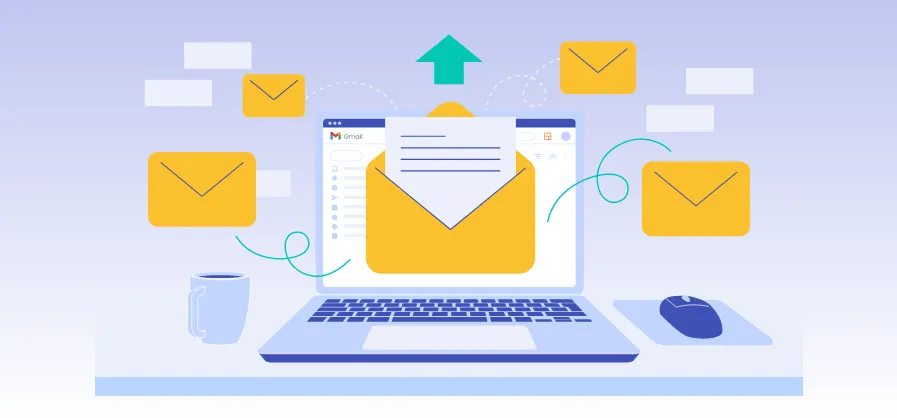
Cold Email Template 1: Solution-Oriented Approach
Cold Email Template 2: Benefit-Driven Approach
Cold Email Template 3: Value and Social Proof Approach
Cold Email Template 4: Industry Trend Focus
Cold Email Template 5: Personalized Insight Approach
Cold Email Template 6: Direct Offer Approach
Cold Email Template 7: Challenge-Solution Model
Cold Email Template 8: Expertise-Sharing Approach
Cold Email Template 9: Trend-Based Invitation
Cold Email Template 10: Industry Insight Offer
Cold Email Template 11: Consultation Approach
Cold Email Template 12: Innovative Solution Introduction
Cold Email Template 13: Industry-Specific Value Proposition
Cold Email Template 14: Personalized Collaboration Proposal
Cold Follow-Up Email Template 15: Checking In After Initial Contact
Best Practices to Ensure Your Cold Emails Are Welcomed
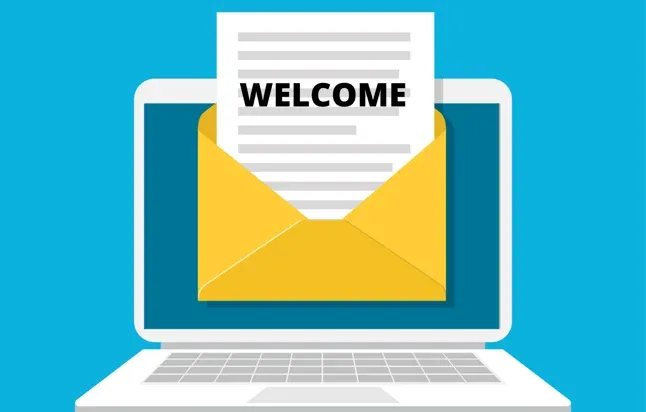
To generate new business opportunities through cold emailing while ensuring your approach is distinct and effective, it’s essential to adopt best practices that go beyond basic email structure and writing tips.
Here are specialized best practices focused on strategy, research, and relationship building:
Leverage Advanced Personalization Techniques
Behavioral Triggers: Send emails based on specific actions taken by your prospects, such as visiting a particular page on your website or engaging with a relevant LinkedIn post.
Dynamic Content: Use tools that allow for dynamic content insertion based on the recipient’s profile, ensuring that each email is as relevant as possible.
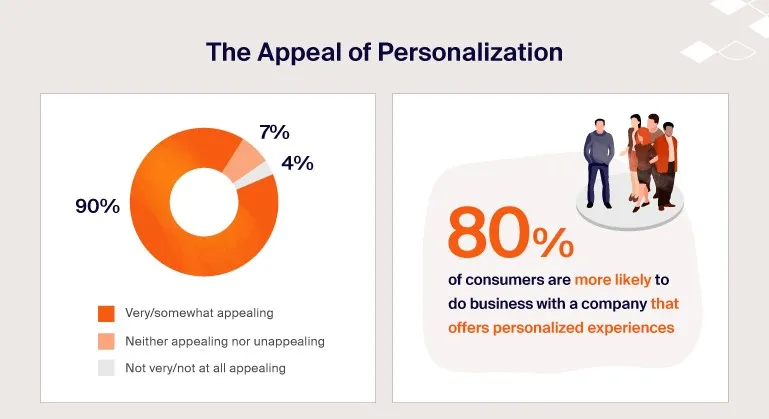
Utilize Technological Tools and Automation Wisely
CRM Integration: Ensure your cold emailing efforts are integrated with your CRM to track interactions, follow-ups, and conversions effectively.
Email Automation Platforms: Utilize platforms that offer advanced personalization, scheduling, and A/B testing capabilities to optimize your campaigns.
Establish Credibility and Trust
Expert Content Sharing: Share insightful content you or your company have created that establishes your expertise and adds value to your prospects.
Transparency and Honesty: Be upfront about why you’re reaching out and what you’re offering, avoiding any form of deception in your emails.
Optimize for Engagement and Conversion
Interactive Elements: Incorporate elements like polls, surveys, or interactive links that encourage engagement directly from the email.
Micro-conversions: Design your cold email strategy to encourage small commitments first, such as reading a blog post or watching a video, building up to larger conversion goals.
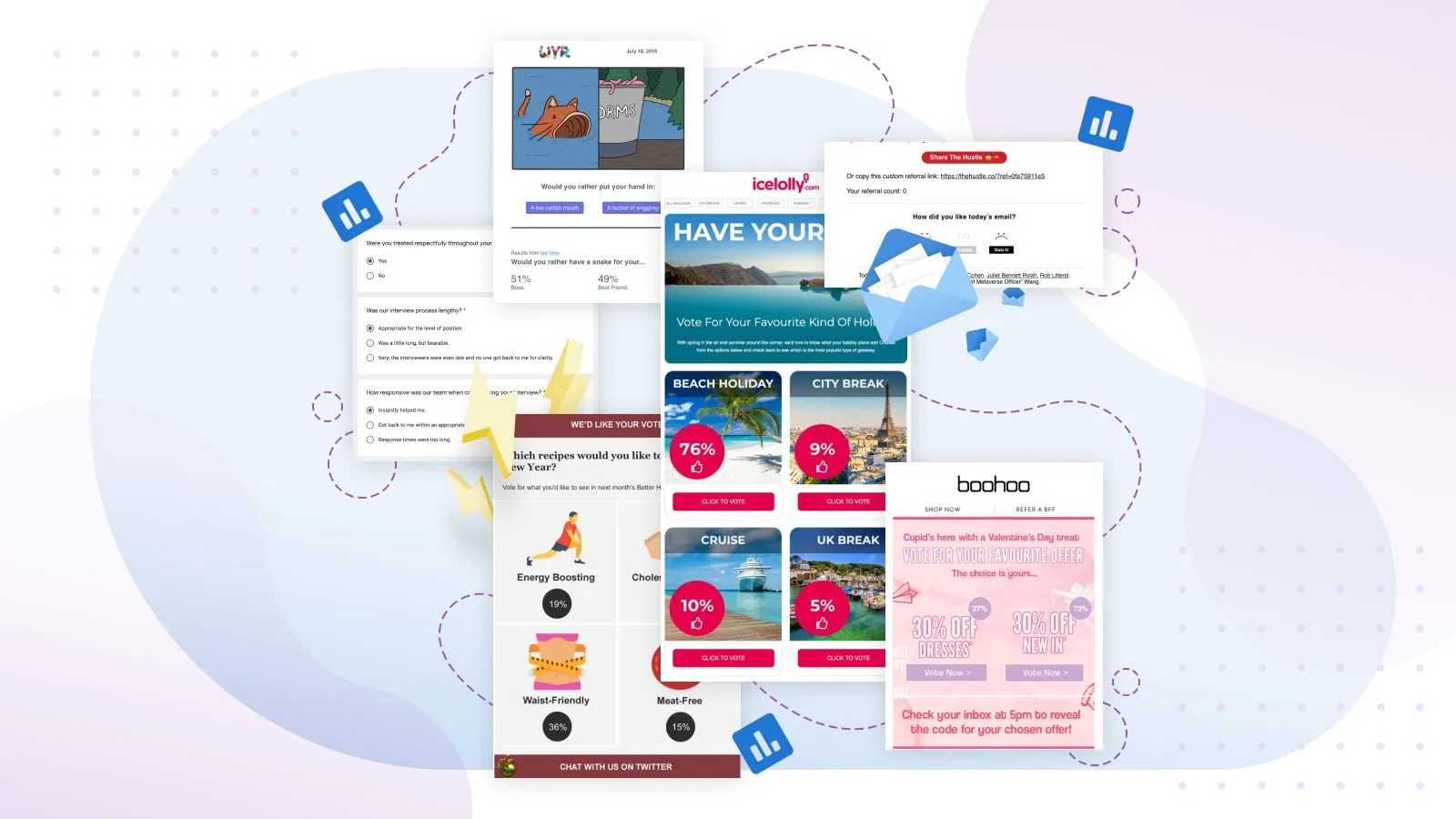
Focus on Relationship Building
Long-term Perspective: View cold emailing as a starting point for a relationship, not just a one-off interaction. Offer ongoing value without always expecting an immediate sale.
Networking Mindset: Approach each email as an opportunity to expand your network. Even if there’s no immediate business opportunity, a strong relationship can lead to referrals or partnerships in the future.
Analyze and Adapt Based on Performance Data
Metrics Analysis: Beyond open and click-through rates, analyze response rates, conversion rates, and the quality of interactions to measure the true impact of your cold emails.
Feedback Loops: Incorporate feedback from prospects, whether positive or negative, into your strategy to continuously improve the relevance and effectiveness of your outreach.

Stay Informed and Compliant
Legal Compliance: Regularly update yourself on email marketing laws like CAN-SPAM, GDPR, and others relevant to your target audience's location.
Ethical Practices: Ensure your email practices respect the recipient’s privacy and preferences, including clear opt-out options and respecting unsubscribes.
Tips for Avoiding the Spam Folder When Conducting a Cold Email Campaign
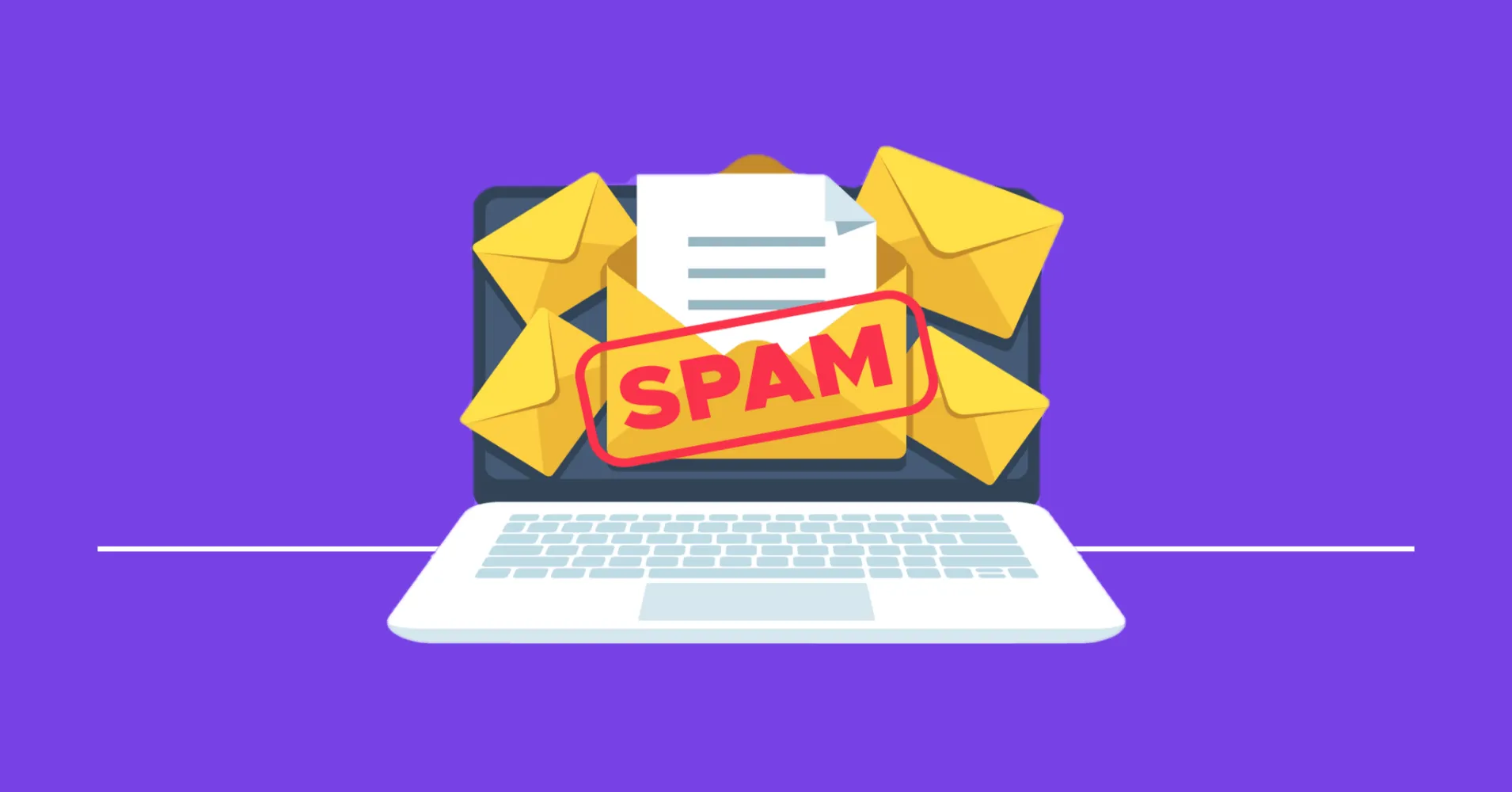
Avoiding the spam folder is crucial for the success of any cold email campaign. Landing in spam not only diminishes the effectiveness of your outreach but can also harm your sender reputation over time.
Landing in the primary inbox is crucial for cold email success, which can be achieved by avoiding spam triggers and maintaining clean email lists.
Here are tips to help ensure your cold emails reach the intended inbox:
1. Use a Reputable Email Service Provider (ESP)
ESPs with good reputations have established trust with email platforms, reducing the likelihood your emails will be marked as spam.
Choose an ESP known for high deliverability rates and that offers tools for managing your email list health.
2. Authenticate Your Email
Email authentication methods like SPF, DKIM, and DMARC prove to ISPs that you are who you say you are, reducing the chances of being flagged as spam.
Set up these authentication protocols in your domain’s DNS settings. Most ESPs provide guidelines or assistance in this process.
3. Maintain a Clean Email List
Sending emails to non-existent addresses or recipients who consistently don’t engage can hurt your sender score.
Regularly clean your email list by removing bounced addresses and inactive subscribers. Use double opt-in methods where applicable.
4. Personalize Your Emails
Beyond just avoiding the spam folder, personalization increases engagement rates. Generic, blast-type emails are more likely to be marked as spam by recipients.
Use the recipient's name and tailor the content to their interests or industry. Advanced personalization techniques can significantly increase the relevance of your message.
5. Avoid Spam Trigger Words and Phrases
Certain words and phrases are commonly associated with spam and can trigger filters. Examples include “free,” “guarantee,” “risk-free,” and overly aggressive calls to action.
Write naturally and focus on providing value. If you’re offering something for free, contextualize it within the value it provides to the recipient.
6. Monitor Your Sending Volume and Frequency
Sudden spikes in email volume can trigger spam filters, especially if you're sending thousands of emails from a new domain.
Gradually increase your sending volume over time and maintain a consistent frequency. Consider segmenting your list and sending emails in batches.
7. Include a Clear Unsubscribe Option - CAN SPAM Act
CAN-SPAM laws require you to provide recipients with an easy way to opt out of future emails. Failing to comply can result in your emails being marked as spam.
Include a visible and straightforward unsubscribe link in every email. Respect unsubscribe requests promptly to maintain compliance and sender reputation.
8. Test Your Emails Before Sending
Testing can help you spot potential issues that could land your email in spam, such as broken links, images that don’t load, or problematic content.
Use tools that simulate how your email performs across different email clients and spam filters. Make adjustments based on these insights.
9. Engage in Warm-up Activities for New Domains
Sending a large volume of emails from a new domain can be a red flag for spam filters.
Start with a lower volume of emails and gradually increase as you establish a sending history. Engaging with recipients who reply also helps improve your sender reputation.
How to Measure and Analyze Your Cold Email Efforts
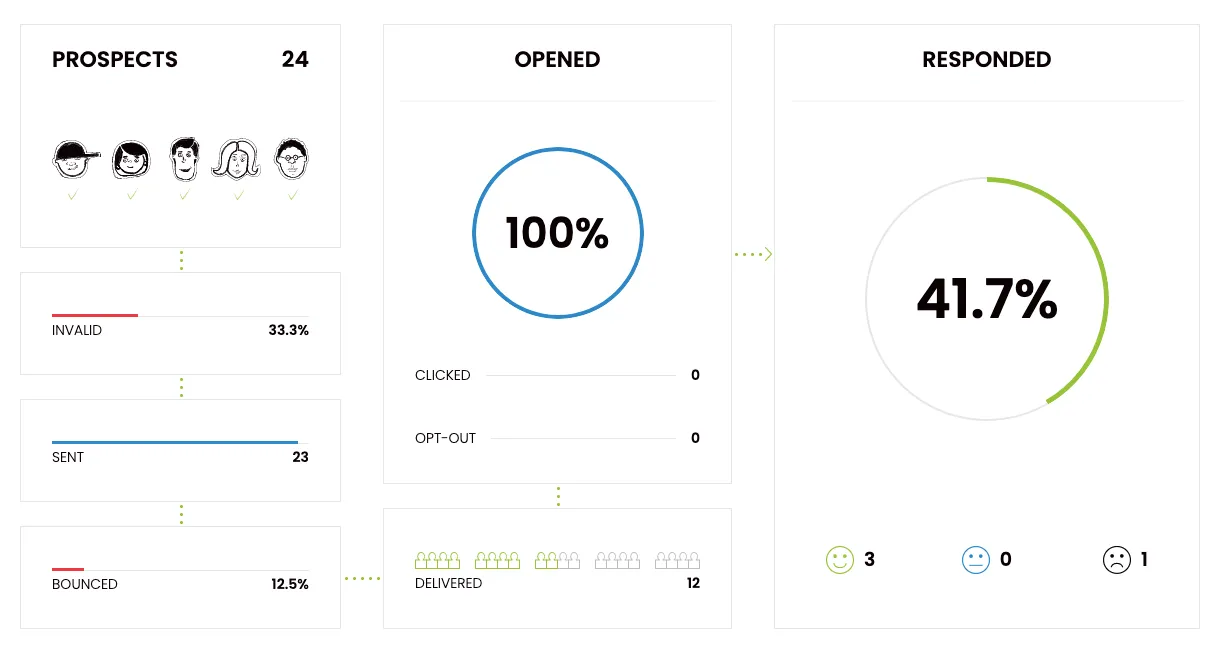
Measuring and analyzing your cold outreach campaign efforts is crucial for understanding their effectiveness and identifying areas for improvement.
By tracking specific metrics and using the insights gained, you can optimize your campaigns for better results. Here’s how to approach this process:
1. Open Rate
The percentage of recipients who opened your email. It’s a basic indicator of how well your subject lines are performing of your cold email outreach
Compare the open rates of different campaigns to see what types of subject lines or sending times yield better results. A significantly lower open rate may suggest issues with your subject lines, sender reputation, or email deliverability.
2. Click-Through Rate (CTR)
The percentage of email recipients who clicked on one or more links contained in an email. It measures the effectiveness of your email content and call to action.
Analyze which links are being clicked the most to understand what content or offers are most appealing to your audience. Use A/B testing to optimize your CTA placement, wording, and design.
3. Conversion Rate
The percentage of recipients who completed a desired action after clicking a link in your email, such as filling out a form or making a purchase.
This metric is key to understanding the ultimate effectiveness of your cold emails in driving business outcomes. Track which emails lead to the highest conversion rates and analyzes the content, offer, and audience targeting for those emails to replicate success in future campaigns.
4. Bounce Rate
The percentage of your total emails sent that could not be delivered to the recipient's inbox.
High bounce rates can harm your sender's reputation and email deliverability. Segment bounces into hard and soft bounces to identify temporary issues versus permanent problems, like invalid email addresses, and clean your email list accordingly.
5. Reply Rate
The percentage of recipients who responded to your email. It’s a direct indicator of how engaging and compelling your message is.
Replies, whether positive or negative, provide direct feedback from your audience. Analyze the content of replies to adjust your targeting, messaging, or offers. High reply rates often signal a well-targeted and well-crafted message.
6. Unsubscribe Rate
The percentage of recipients who opted out of receiving further emails from you after receiving your email.
While some unsubscribes are normal, a high rate can indicate that your content is not relevant or appealing to your audience. Review your segmentation and personalization strategies to ensure your messages are targeted correctly.
7. List Growth Rate
The rate at which your email list is growing, taking into account new subscribers and unsubscribes.
This metric helps assess the overall health and potential of your email marketing efforts over time. A healthy, growing list suggests your content is valuable and appealing enough to attract new subscribers.
Best Cold Emailing Tools to Use for Cold Emailing
Cold email software helps streamline the process of sending personalized outreach at scale, ensuring efficiency and consistency in campaigns.
Choosing the right cold email platform, like Alore, Lemlist or Snov.io, ensures better automation and tracking for campaigns.
1. Alore - Outreach Sales Tech Stack

Alore combines advanced features like email warm-up, drip campaign management, and detailed analytics to optimize your cold email outreach.
- Blaze Warmer Dashboard: Tracks open rates, reply rates, and spam protection with visual graphs and actionable insights.
- Drip Campaigner: Customizable mail sequences and automated follow-ups enhance engagement.
- Domain Health Checks: Ensures optimal deliverability by monitoring SPF, DMARC, and DNS settings.
- Advanced Scheduling: Allows email sending based on time zones and time slots for improved performance.
2. Hunter.io - For Finding Email Addresses
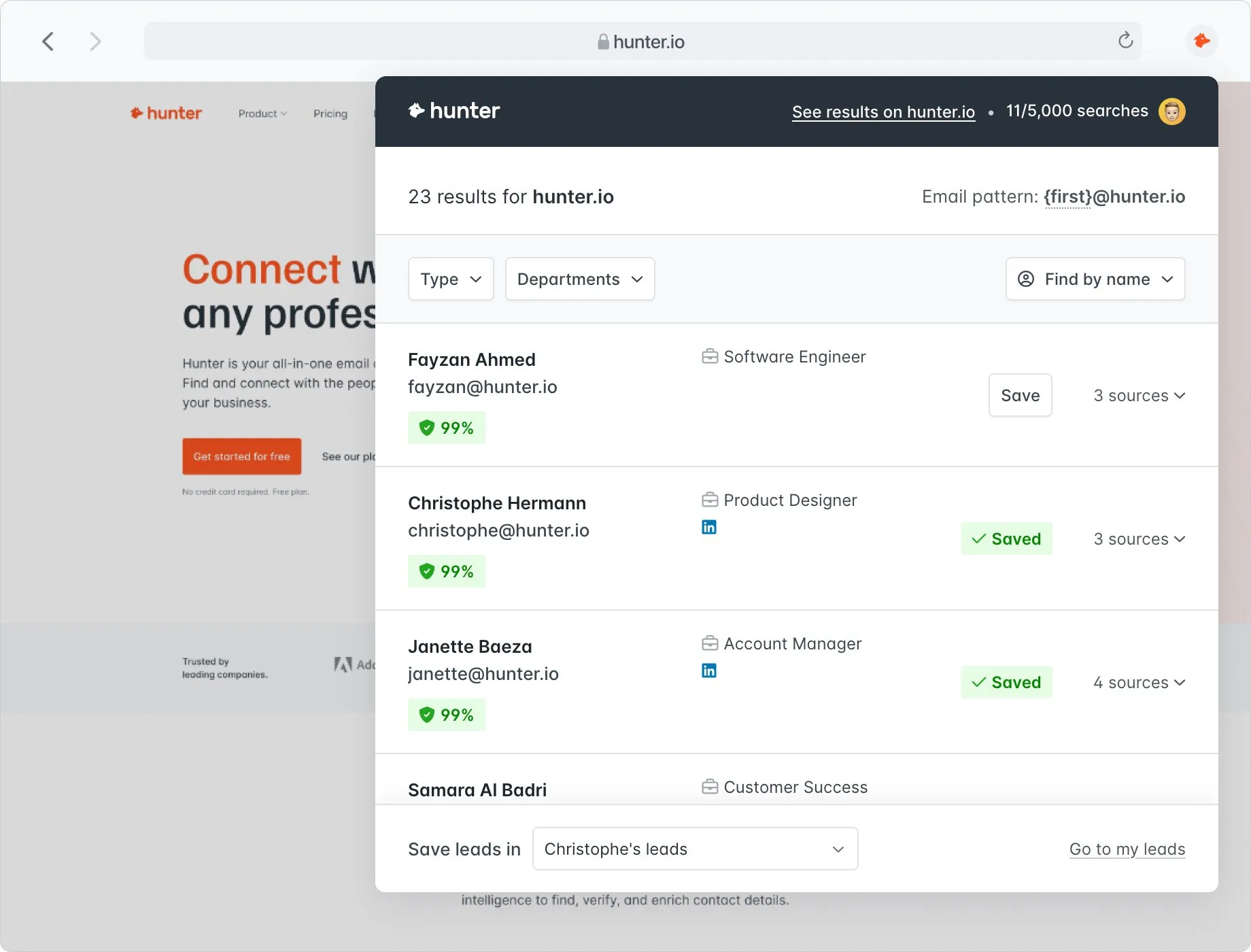
Cold Email Campaigns often start with the challenging task of finding accurate email addresses. Hunter.io excels in this area, allowing users to search for email addresses associated with any website. This tool is invaluable for building a targeted contact list for your cold emailing efforts.
3. Mailchimp - For Email Campaign Management
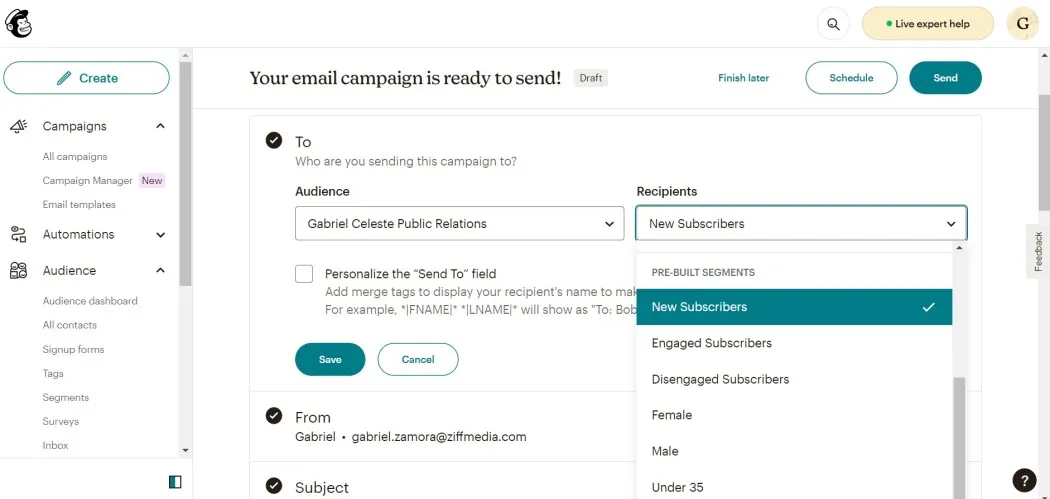
While primarily known for marketing email blasts, Mailchimp also offers features suitable for cold email campaigns. Its robust segmentation, A/B testing, and analytics tools can help tailor your messages and track their performance. Additionally, Mailchimp's blog posts offer insights and best practices on email marketing, which are beneficial for planning and executing cold email strategies.
4. Yesware - For Email Tracking and Analytics

Yesware integrates with your email client to provide real-time tracking information on email opens, clicks, and replies. This tool is essential for understanding recipient engagement and optimizing follow-up strategies. By analyzing this data, you can adjust your approach to increase the effectiveness of your cold emailing.
5. Reply.io - For Sales Engagement & Automation

Reply.io is a sales engagement platform that automates personal email outreach, calls, and tasks, while Sales Teams can still maintain a high level of personalization. It's particularly useful for executing cold call strategies alongside cold emailing, as it allows for a multi-channel outreach approach, increasing the chances of connecting with prospects.
6. Snov.io - For Lead Generation & Email Verification
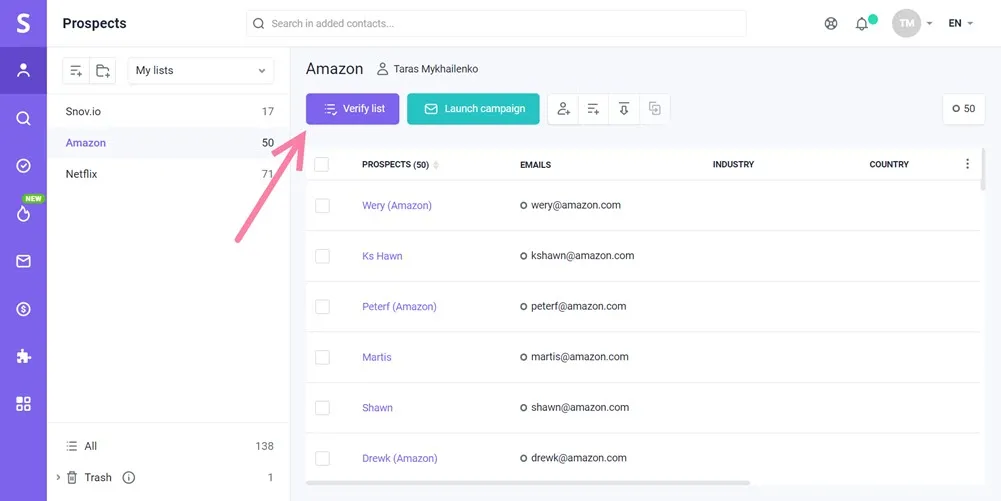
Snov.io offers a comprehensive suite of tools including a powerful email finder and verifier, which helps reduce bounce rates by ensuring your emails reach valid addresses. It also features an email drip campaign function, allowing for automated, yet personalized, follow-up emails based on recipient actions or inactions.
7. Lemlist - For Creating Personalized Cold Emails

Lemlist sets itself apart with its ability to send highly personalized cold emails at scale. You can include personalized images and videos within your emails, making them stand out in your recipients' inboxes. This level of personalization can significantly increase the response rates of your cold email campaigns.
8. ZoomInfo - For Comprehensive B2B Contact Data

ZoomInfo provides access to a vast database of B2B contact and company information, which can be used to identify and target your ideal customers. This tool is especially useful when your cold emailing strategy is data-driven, requiring detailed insights into potential leads' industries, company sizes, and roles.
Concluding Thoughts
Cold emailing helps you find new customers by sending them emails they weren’t expecting. To make these emails work well, you need to talk directly about what these potential customers care about and show them how your product or service can help.
Sending emails at the right time, like in the middle of the week, can get more people to open them. Using names and information specific to each person makes your emails more interesting to them. Including stories of how you’ve helped others can also make your emails more convincing.
To keep your emails from being ignored or marked as spam, make sure they are interesting and useful to the people you are sending them to. Also, keep track of how many people open, click on, and respond to your emails so you can get better at sending them.
In short, cold emailing can really help grow your business if you focus on sending the right message, to the right people, at the right time, and use the right tools to help you along the way.

.webp)



.jpg)

.jpg)
